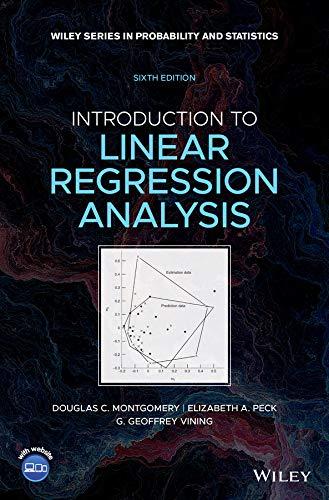Two-Way Analysis of Variance. Suppose that two different sets of treatments are of interest. Let (y_{i j
Question:
Two-Way Analysis of Variance. Suppose that two different sets of treatments are of interest. Let \(y_{i j k}\) be the \(k\) th observation level \(i\) of the first treatment type and level \(j\) of the second treatment type. The two-way analysis-ofvariance model is
\[
\begin{aligned}
& y_{i j k}=\mu+\tau_{i}+\gamma_{j}+(\tau \gamma)_{i j}+\varepsilon_{i j k} \\
& \quad i=1,2, \ldots, a, \quad j=1,2, \ldots, b, \quad k=1,2, \ldots, n
\end{aligned}
\]
where \(\tau_{1}\) is the effect of level \(i\) of the first treatment type, \(\gamma_{j}\) is the effect of level \(j\) of the second treatment type, \((\tau \gamma)_{i j}\) is an interaction effect between the two treatment types, and \(\varepsilon_{i j k}\) is an \(\operatorname{NID}\left(0, \sigma^{2}\right)\) random-error component.
a. For the case \(a=b=n=2\), write down a regression model that corresponds to the two-way analysis of variance.
b. What are the \(\mathbf{y}\) vector and \(\mathbf{X}\) matrix for this regression model?
c. Discuss how the regression model could be used to test the hypotheses \(H_{0}: \tau_{1}=\tau_{2}=0\) (treatment type 1 means are equal), \(H_{0}: \gamma_{1}=\gamma_{2}=0\) (treatment type 2 means are equal), and \(H_{0}:(\tau \gamma)_{11}=(\tau \gamma)_{12}=(\tau \gamma)_{22}=0\) (no interaction between treatment types).
Step by Step Answer:

Introduction To Linear Regression Analysis
ISBN: 9781119578727
6th Edition
Authors: Douglas C. Montgomery, Elizabeth A. Peck, G. Geoffrey Vining





